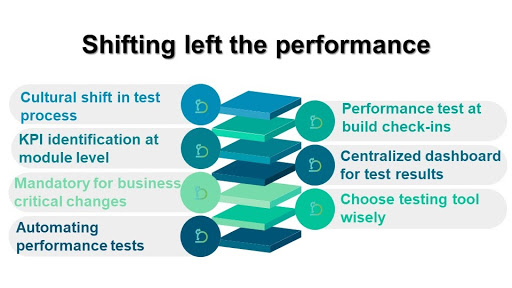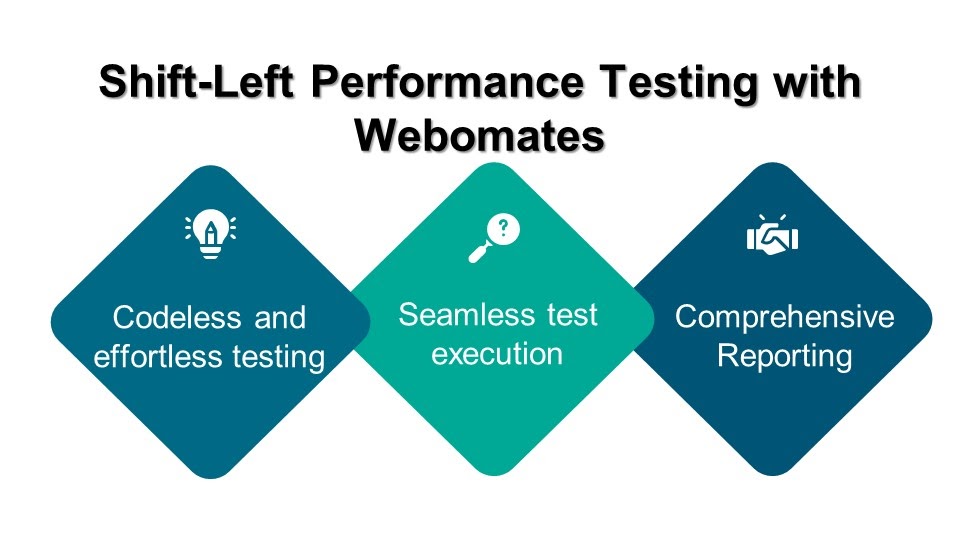Performance testing is a non-functional testing to identify performance bottlenecks and to find any possible conditions that may lead to potential crashes when the software is subjected to extreme testing conditions in a production-like environment.
There is a misconception that it is good to test the software as a whole for performance. This leads to placing performance testing at the end of the development cycle. What if the application’s performance is not up to the mark? In that case, tracing back the origin of the issue adds to the debugging time and efforts, thus reducing the overall development velocity, and increasing the cost.
It is high time to include performance testing from the very onset of the project, and not as an afterthought. Tracing and fixing performance issues just before deployment is an expensive exercise. With shorter delivery cycles, it is prudent to check every deliverable, however small, for performance. Integrating performance tests in the continuous testing process is a great way of ensuring that every deliverable is tested thoroughly for functionality as well as performance.
Shift left testing has been gaining importance recently. As a norm, including performance testing early in the development cycle proves beneficial for everyone, i.e. developers, testers, and business. Read further to understand how we can achieve it.

- Process Explanation Introduce cultural shift in the work process Make developers responsible for testing their code for performance along with the unit tests. This will not only help in maintaining the sanctity of agile philosophy but also add value to the whole development process.
- Shifting left of performance testing means increased collaboration between the testers and the developers. With both teams working together, it will be easy to identify what all needs to be tested for the performance earlier in the development cycle. Defining clear communication protocols will reduce the time needed in the overall testing, debugging, and re-testing cycle.
Identify KPI’s at module/submodule level Usually, KPI’s for performance are defined at the application level. But, defining them for modules and sub-modules will aid in improving the efficiency and performance of the smaller units. Thus, rendering better performance for the application as a whole. Initial time investment is done to identify these KPI’s will reap benefits in the long run.
Mandatory for business-critical changes
Business-critical changes call for thorough scrutiny and testing at a functional level as well as non-functional level. It will be a costly affair to make changes at such unit level for performance and then test them, but it is worth it if we look at the larger picture.
Automate performance tests
Shifting left the performance test means testing the same code numerous times, thus it will be a good idea to automate the tests to avoid errors associated with human fatigue and monotony.
Introduce performance test at build check-in level Smoke testing the builds for performance, with moderate loads in the testing environment, at the time of check-in, can serve as indicators in case of any performance-related issues.
Centralized test result sharing to enable quick feedback
Sharing the test results across the board is the quickest way of solving any problem. It not only saves a lot of time but also the cumulative efforts, resulting in reduced costs.
Selecting the right tool What good will it serve by chalking out a process, and not having the right tool at your disposal to implement it? Having the right testing and reporting tool can be a game changer. That is where Webomates CQ can help you.

Webomates has optimized testing by combining our patented multi-channel functional testing with performance testing where the same functional tests can be used for load testing Read more about this blog : Shift left testing


No comments:
Post a Comment